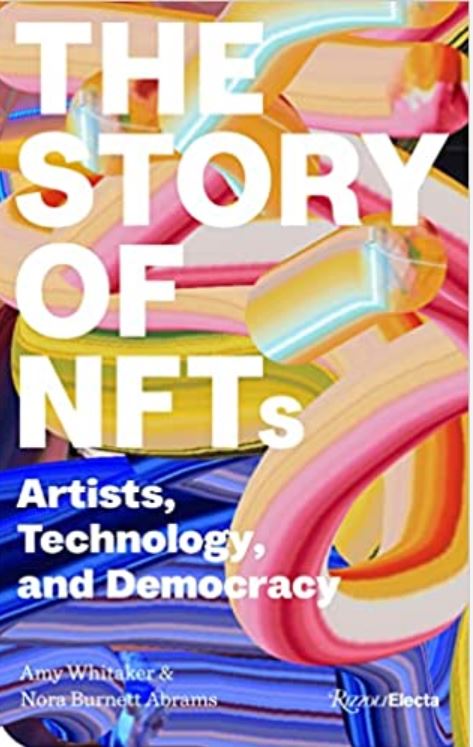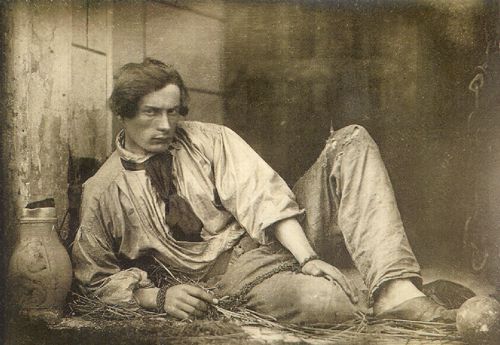NFTs are here to stay!
“I think the reason […] I’ve chosen the career that I have is because artists are always the seers or the truth tellers. They show us the way forward”. Nora Burnett Abrams, The Story of NFTs, Artists, Technology, and Democracy. P. 53
During our latest New York Art Trip (March 2023) while visiting the Museum of Modern Art with our group, I bought the final available copy of The Story of NFTs Artists, Technology, and Democracy. I have to share with you this excellent first history of “NFTs” (non-fungible tokens) written by Amy Whitaker and Nora Burnett Abrams. This 122-page story is very well structured in six logical parts that take us from the origins to the future passing by the present that is being written “now”. This is why this book is full of questions that remain unanswered.

The authors perfectly illuminate the first milestones of a history in the making. On the very first page, they write that “the concept of NFT is quite simple. It’s simply using a blockchain to track the ownership of a digital object,” say a work of art. They begin their review with the ephemeral “wall-drawings” of Sol Lewitt who, as early as 1968, conferred certificates of authenticity on his uninstalled works, thus ensuring their longevity. The holder of the certificate remains the owner of the work even though the physical work no longer exists — google “Sol LeWitt Certificate of Authenticity“. Forty years later, in 2009, the Bitcoin blockchain was launched; in 2014, Kevin McCoy made the first NFT; in 2015, Vitalik Buterin launched the Ethereum blockchain, and the excitement hasn’t stopped since. It will continue. NFT sales, which totalled $4.6 million in 2019, reach $11.1 billion in 2021.
The book is very well illustrated, with period photos, of works from the past, but especially effective synoptic charts that explicitly show the implications of “Neftean” production, including the one on the next page that illustrates the fundamental concept of the non-fungible. The NFT revolution seems to offer only benefits to visual artists if only the sharing and redistribution of power. As soon as artists obtain a crypto-wallet to mint and sell their first work on Web 3, accompanied by a “smart contract,” they are guaranteed to receive the rights from secondary sales. In addition, artists will know every detail of the trajectory of their works on the blockchain — nothing like the certificates of authenticity that can be adjusted at the whim of the collector and the gallery owner. Transparency, fairness, inclusion, compensation, and new economic structures are finally open to artists whose rights have been so often violated.
The blockchain that offers at the same time a system of governance, a clear and transparent registry, and a gathering device, will have certain repercussions on the “central authority” (museums, public galleries, auctioneers, etc.). Today, everything in the museum world is being questioned in light of the emergence of blockchains.
The book also questions major issues associated with NFT works: transactions, regulation, privacy, security, royalties, and also the changing aesthetics of both digital and traditional art. Let’s recall the outcry over Andy Warhol’s Campbell’s soup cans, which inspired John Berger’s Ways of Seeing, published in 1972. Also, the authors predict that there will be a differentiation between NFT works created by digital artists and those made by adventurous artists with a more traditional fine art background. While markets for both types of artists seem to be coming together, the ease with which each group occupies the other’s domain remains tricky.

© Paris, RMN-Hervé Lewandowski
Bottom line. The book is realistic in that it ends with the crash of the crypto market and the ongoing volatility. It remains to be seen how the NFT market will develop. And to finish, I quote the authors here: “In 1840, the French painter Paul Delaroche saw a daguerreotype photograph for the first time and declared the death of painting. Given how many artists and critics have declared the death of painting in the centuries since, we know that such proclamation’s hyperbole relates far more to fear of something new than to the exhaustion of existing structures. […] It is consolation and mystery that no one knows the future.” (p. 111)


Well written Yves.
Merci pour ce résumé Yves!
While I have doubts and concerns about NFTs, the comment about photography being the “death of painting” does make a compelling point.
This is a good read, Yves. Thank you. I am still having a hard time wrapping my head around the “why” of NFTs. I see some benefits for the artists, and you took those a step further for me. But what’s in it for the buyer? Why purchase an original creation that you can only show on a screen?
maybe I just don’t get it.
This could have been more viable for digital artists. David Choe did well with his, I suspect. https://munko.io/ But the whole thing had the feel of a video game avatar. Why pay for that?
In fact another artist, whose name escapes me, has apparently destroyed the whole NFT trend by devaluing his offering and proving the bottom can fall out in the digital realm, when he got too hungry, or maybe ambitious, with his NTF purchase add-ons.
That story came to me via a young computer engineer who follows the trends. according to him, the highest, or most likely, target market, his age group, has lost faith in the NFT experiment and sees it as a passing fad that’s already dead.
I do wish the book you read was still in print. Maybe it’s available in digital format? Has to be, right?😉 I will look for it. I crave a better understanding of this mysterious world of NFTs.
Thanks for keeping the discourse going. This is interesting.